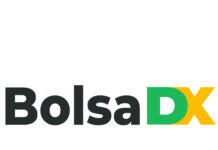
Zerocoin is not a currency but a technology – a protocol built on top of Bitcoin which allows for private and anonymous transactions via a process of coin mixing.
In what amounts to a digital version of money laundering, any coins used in transactions are thrown into a mixer along with other coins. When the transactions come out the other end, no one can identify which coins came from where.
This was the basic idea presented by John Hopkins professor Matthew D. Green in 2013, along with graduate students Ian Miers and Christina Garman.
The 2013 paper entitled: Zerocoin: Anonymous Distributed E-Cash from Bitcoin, laid out how the protocol would work, but it took another three years before anyone could implement it into a live, functioning cryptocurrency.
Since then, multiple cryptocurrencies have appeared which make use of the Zerocoin protocol, or some variation of it. Let’s take a look at Zerocoin’s legacy five years on after its original proposal.
Zcoin (XZC)
Launched on a testnet in 2015 under the name Moneta, the project eventually rebranded to Zcoin and went live in September 2016.
Since then, Zcoin has proved a very popular coin, particularly in 2017 when the value of an XZC coin rose from $0.48 in January, to $141 in December. Even taking the subsequent December-January crash into account, XZC is still valued at over $19 per unit, marking a 3858% increase since last year.
While Zcoin has earned praise for the anonymity that the Zerocoin protocol provides it – and has proved completely private and anonymous thus far – it has not been without its problems.
In early 2018 a bug was found which allowed hackers to destroy the coins of honest users by marking them as double-spent, thus burning them. The dev team purports to be aware of the issue and are working on resolving it.
Zoin (ZOI)
Zoin is a fork of Zcoin which commenced just a couple of months after Zcoin’s launch. The main reason for the fork was to remove the founder rewards which saw 20% of the mining fees kick back to the development team.
Zoin remained fairly untouched throughout 2016 and 2017, only coming to life in December when the entire market shot up.
Zoin experienced a pump for a few months afterwards, until its value suddenly dumped 60% in one day on June 6th. Zoin finds itself as 613th place in market cap rankings, and looks to be tumbling evermore. Zoin suffers from the same vulnerability as its parent chain, Zcoin.
Zcash (ZEC)
In 2014 an improvement was offered to the Zerocoin protocol which sought to reduce proof sizes by 98% and utilize zero-knowledge proofs (zk-SNARKs) in its verification method. This was known as the Zerocash protocol, and the first cryptocurrency to implement it was Zcash in 2016.
Zcash’s improvements come at a cost, however, and require a large database while the time it takes for a coin to go through the transaction process can be anywhere between 87 to 178 seconds.
With that said, Zcash occupies the highest spot among Zerocoin descendants on the market cap Top 100, occupying the 22nd spot at the time of writing.
PIVX (PIVX)
PIVX holds the distinction of being the first of the Zerocoin cryptos to be based on Proof-of-Stake (PoS).
PIVX started at as a privacy-based coin in early 2016, before eventually implementing the Zerocoin protocol in October of 2017.
While the market surge a few months later makes it difficult to gauge the singular effect of the Zerocoin implementation, PIVX has maintained high trading volumes throughout the past year and finds itself at 71st spot in market cap rankings.










